
Andrew Jackson Jr was an American lawyer, planter, general, and statesman who served as the seventh president of the United States from 1829 to 1837. Before his presidency, he gained fame as a general in the U.S. Army and served in both houses of the U.S. Congress. Often praised as an advocate for ordinary Americans and for his work in preserving the union of states, Jackson has also been criticized for his racial policies, particularly his treatment of Native Americans.
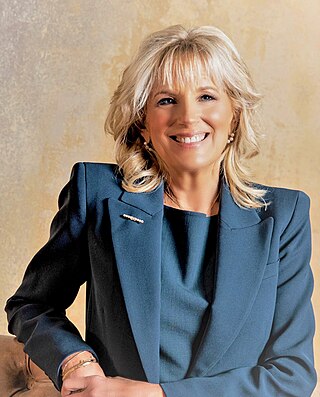
First Lady of the United States (FLOTUS) is the title held by the hostess of the White House, usually the wife of the president of the United States, concurrent with the president's term in office. Although the first lady's role has never been codified or officially defined, she figures prominently in the political and social life of the United States. Since the early 20th century, the first lady has been assisted by official staff, known as the Office of the First Lady and headquartered in the East Wing of the White House.

The Hermitage is a historical museum located in Davidson County, Tennessee, United States, 10 miles (16 km) east of downtown Nashville. The 1,000-acre (400 ha)+ site was owned by Andrew Jackson, the seventh president of the United States, from 1804 until his death at the Hermitage in 1845. It also serves as his final resting place. Jackson lived at the property intermittently until he retired from public life in 1837.

Eliza Johnson was the first lady of the United States from 1865 to 1869 as the wife of President Andrew Johnson. She also served as the second lady of the United States March 1865 until April 1865 when her husband was vice president. Johnson was relatively inactive as first lady, and she stayed out of public attention for the duration of her husband's presidency. She was the youngest first lady to wed, doing so at the age of 16.

Rachel Jackson was the wife of Andrew Jackson, the seventh president of the United States. She lived with him at their home at the Hermitage, where she died just days after his election and before his inauguration in 1829—therefore she never served as first lady, a role assumed by her niece, Emily Donelson.
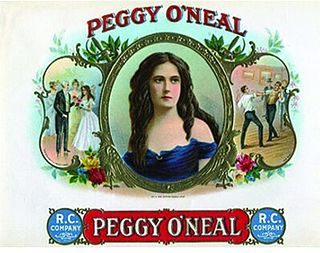
The Petticoat affair was a political scandal involving members of President Andrew Jackson's Cabinet and their wives, from 1829 to 1831. Led by Floride Calhoun, wife of Vice President John C. Calhoun, these women, dubbed the "Petticoats", socially ostracized Secretary of War John Eaton and his wife, Peggy Eaton, over disapproval of the circumstances surrounding the Eatons' marriage and what they deemed her failure to meet the "moral standards of a Cabinet Wife".

Martha "Patsy" Randolph was the eldest daughter of Thomas Jefferson, the third president of the United States, and his wife, Martha Wayles Skelton Jefferson. She was born at Monticello, near Charlottesville, Virginia.

Andrew Jackson Donelson was an American diplomat and politician. He served in various positions as a Democrat and was the Know Nothing nominee for US vice president in 1856.

John Donelson (1718–1785) was an American frontiersman, ironmaster, politician, city planner, and explorer. After founding and operating what became Washington Iron Furnace in Franklin County, Virginia for several years, he moved with his family to Middle Tennessee which was on the developing frontier.
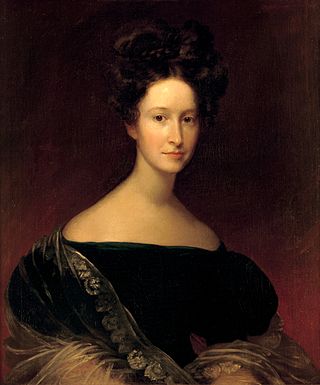
Emily Tennessee Donelson was the acting first lady of the United States from 1829 to 1834 during the presidency of her uncle Andrew Jackson. She was the daughter of the brother of Jackson’s wife. Jackson’s wife, Rachel Donelson Jackson, died weeks before her husband's presidential inauguration.
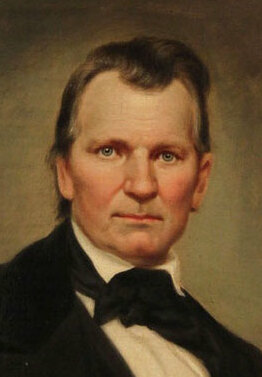
Daniel Smith Donelson was a Tennessee planter, politician, and soldier. The historic Fort Donelson was named for him when he was serving as a Brigadier in the Tennessee militia, early in the American Civil War. He was commissioned as a regular Confederate general, serving notably at the battles of Perryville and Stones River.

Mary Scott McKee was the acting First Lady of the United States for her father Benjamin Harrison. She lived in the White House for the duration of her father's presidency where she worked as an assistant to her mother, first lady Caroline Harrison. She became the acting first lady after her mother's death in October 1892 and remained in the role for the final months of her father's presidency. McKee's young son, known as Baby Harrison, was a popular national figure during the Harrison administration. She disassociated from her father following his marriage to her young maternal cousin Mary Dimmick.

The President's Lady is a 1951 novel of the life of American president Andrew Jackson and his marriage to Rachel Donelson Robards, written by Irving Stone. A biographical film was made in 1953 by 20th Century Fox, directed by Henry Levin and produced by Sol C. Siegel with Levin as associate producer. The screenplay was by John Patrick, based on the 1951 novel by Irving Stone, the music score by Alfred Newman, and the cinematography by Leo Tover.

The President's Dining Room is a dining room located in the northwest corner of the second floor of the White House. It is located directly above the Family Dining Room on the State Floor and looks out upon the North Lawn. The Dining Room is adjacent to the Family Kitchen, a small kitchen designed for use by the First Family, and served by a dumbwaiter connected to the main kitchen on the ground floor.
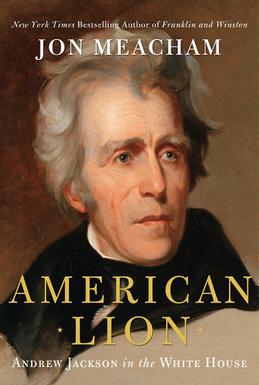
American Lion: Andrew Jackson in the White House is a 2008 biography of Andrew Jackson, the seventh President of the United States, written by Jon Meacham. It won the 2009 Pulitzer Prize for Biography, with the prize jury describing it as "an unflinching portrait of a not always admirable democrat but a pivotal president, written with an agile prose that brings the Jackson saga to life".

Tulip Grove is an antebellum house built in 1836 for Andrew Jackson Donelson, who was the nephew of Andrew Jackson. The site was listed on the National Register of Historic Places in 1970.
Ralph Eleaser Whiteside Earl, was an American painter known as the "court painter" to President Andrew Jackson. He also painted the portrait of Rachel Jackson.
The following is a list of works about the spouses of presidents of the United States. While this list is mainly about presidential spouses, administrations with a bachelor or widowed president have a section on the individual that filled the role of First Lady. The list includes books and journal articles written in English after c. 1900 as well as primary sources written by the individual themselves.

Hannah Jackson was an African American household slave of President Andrew Jackson and his wife Rachel. She was present at both their deaths. She was interviewed twice late in her life for her stories about Jackson and is thought to be the source of some of the stories told about his life.



















